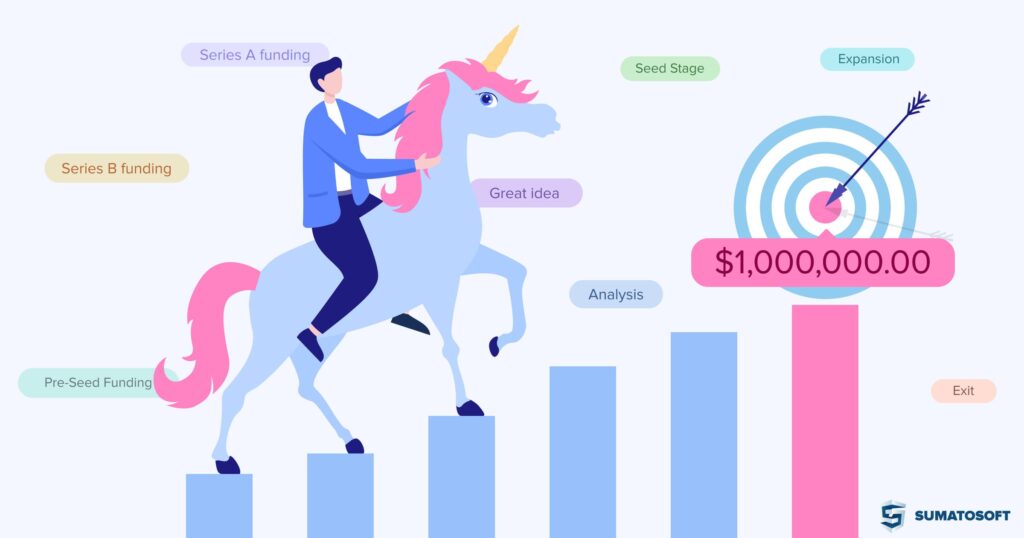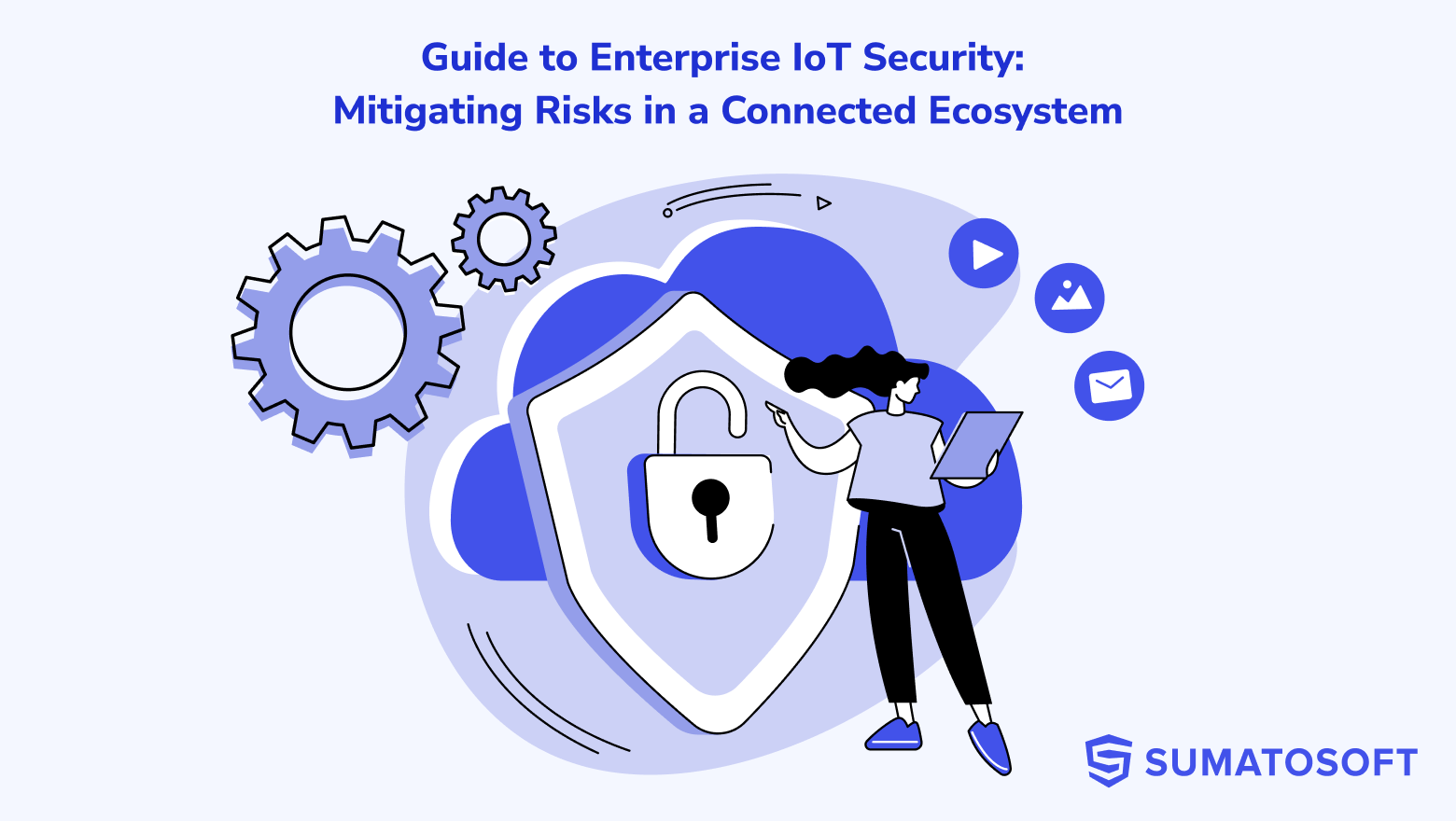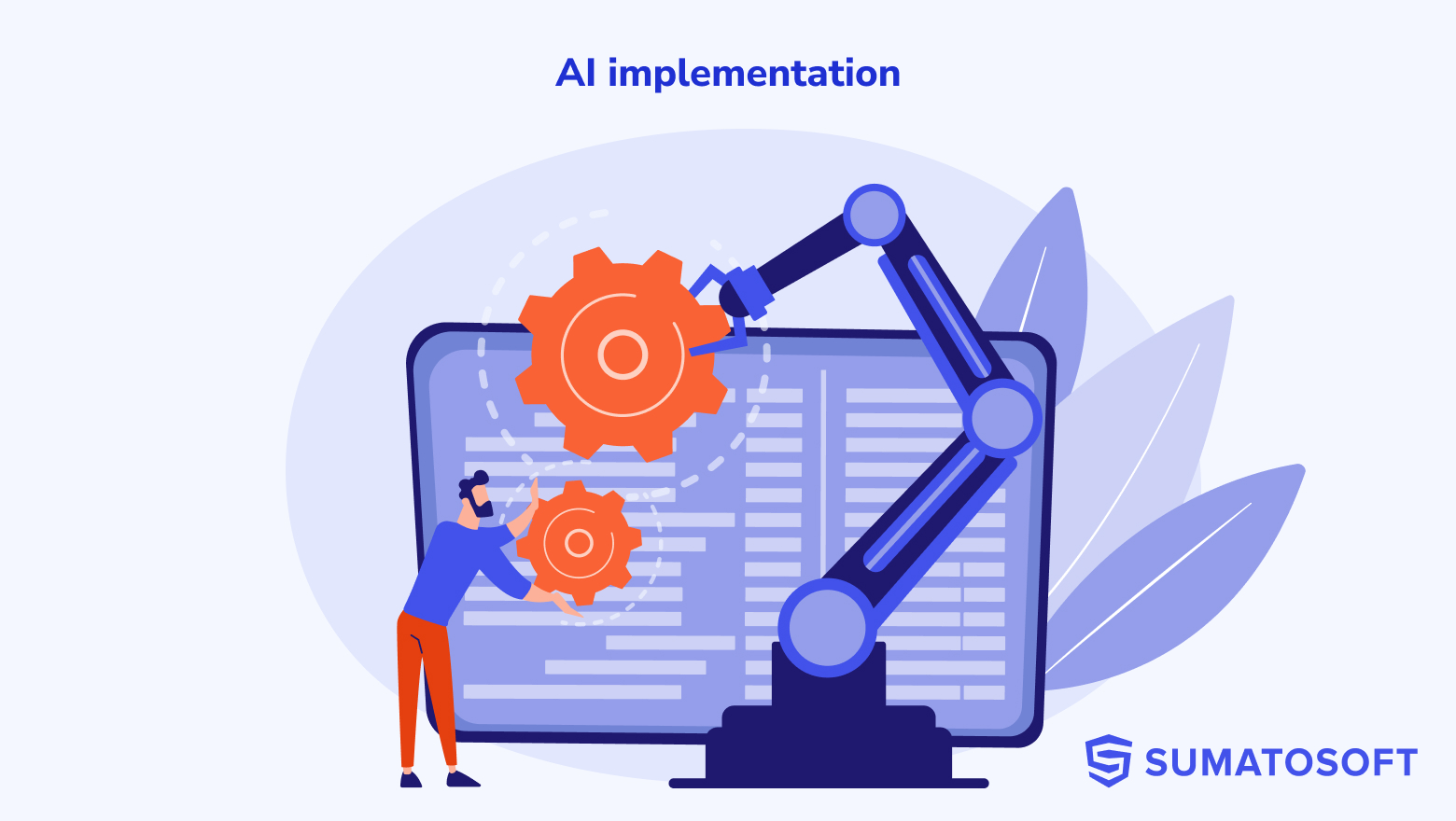How to Become a Unicorn: 7 Startup Development Stages


This article is about the past,
the present,
and the future of startups.
The following text is devoted to two terms: startups and unicorns. The information is based on our experience of how we at SumatoSoft help emerging startups grow up and become unicorns.
This article is about experience-based knowledge rather than general information.
Enjoy reading!
Startups: The Past
The term “startup,” now commonly understood as an “emerging company”, was first used in its current context in 1976 in an article by Forbes magazine. The term was in use before the 1970th, but without any specific connotations it has today.
The term started to take shape during the tech boom of the 1980s, accompanied by the rise of Silicon Valley. Apple and Microsoft could be unofficially considered to be among the first startups ever created.
That was the beginning of the startup world.
Startups: the Present, the Rise of Unicorns
Nowadays, “startup” is a well-known and described term with around 10 million startups started every year worldwide. These are my rough calculations based on a standard number of 50 million newly established startups every year you can find on the Internet. The exact number depends on the statistician’s definition of the startup term. Speaking of which…
Different sources offer varied definitions of what constitutes a modern startup company. Here are two complementary definitions:
According to Investopedia, Startup refers to a company in the first stages of its operations, characterized by three main features:
- the company should offer a single product or service that is expected to have a market fit;
- It faces a capital shortfall for advancing to the next business phase, necessitating funding from diverse sources, including venture capitalists;
- the likelihood of failure exceeds 90%.
Another composite definition is as follows:
- a startup is an entrepreneurial project that meets at least one unsatisfied market need and looks for opportunities to grow quickly.
Difference Between Startup and Small Business
A logical question that follows is: Why do we call a starting company “a startup” instead of “a small business”? However, a startup is not the same as a small business. Here is why:
Growth Intent
Startups have an aggressive and quick growth intent, small businesses strive for gradual and robust growth.
Financing
Startups are funded by angel investors, venture capitalists, and crowdfunding platforms, while small businesses turn to loans, lines of credit, and asset-based financing.
Short and Long-Term Goals
Startups founders want to create innovative products for the market, while small businesses focus on finding an existing market demand and satisfying it.
What Is a Unicorn Startup
The term “unicorn” in the startup and venture capital industry was first coined by venture capitalist Aileen Lee in 2013. Lee used the term to describe privately held startup companies valued at $1 billion or more, which laid the foundation for the term.
To put it simply, a unicorn is a billion-dollar company.
A startup becomes a unicorn when its value reaches over $1 billion without listing on the stock market.
Speaking about how many unicorn companies are there, there are around 1200 unicorn companies around the world, like SpaceX, ByteDance (TikTok), Revolut, etc.
Still, what is a unicorn status?
What Does Unicorn Status Mean
Unicorn status makes a startup highly attractive to investors:
- SpaceX has raised $1bn (£659m) in funding from Google and Fidelity Investments.
- Even the smallest unicorns, like BlueVoyant, which has a valuation of $1 billion, raised $250 million in series D investments in 2022.
Unicorn status means that the startup can set new standards in their industries. Some examples:
- Canva made design accessible to non-professionals.
- Revolut introduced a multi-currency account and fee-free global spending.
- DJI Innovations dominated the consumer and commercial drone market with innovative technology and accessible pricing.
Being a unicorn is more about the effect of the world, industry, and economy rather than just a fancy title. That’s what does unicorn status mean.
Startups: the Future, How to Become a Unicorn
There is a well-defined path everybody can take,
Where dreams converge and innovations awake.
Through grit and vision, and relentless drive,
Startups can flourish, and unicorns arise.
Although various models outline different stages of startup development, a widely accepted and thorough framework consists of 7 distinct stages. This roadmap serves as a guide, helping you navigate the complexity of startup growth from inception to becoming a market-dominant ‘unicorn.’
The Blurry Line Between Startup Stages
The transition between stages might seem vague, so I defined several criteria to get rid of this ambiguity.
Transition Criteria Between Startup Stages:
Here’s how we break down each stage:
- Key questions to consider – these are the strategic questions that you need to answer to move on to the next stage. Failure to address these could result in stagnation or even regression.
- Team size – as your startup grows, so will your team. Knowing what size and type of team is appropriate for each stage can help you scale efficiently.
- Distinguishing features – these are the unique attributes or milestones that set each stage apart from the others. They serve as both goals and indicators of your startup’s progress.
- Funding source – capital is the lifeblood of any startup. Understanding the various funding options available at each stage can be instrumental in ensuring your startup’s longevity and success.
A lot of times, people start with a lot of good ideas, but then they don’t execute. They lose the purity of their vision. You end up running around in circles.
A startup is when ideas are executed. And you are about to know how.
7 Startup Stages to Become a Unicorn

#1 Stage: Everything Starts With a Good or Great Idea
In the very beginning, there is only an idea. That idea must be scalable, have an option to be embodied in a product or service, and solve some pain points of your potential customers.
The easiest way to come up with an idea is to be a part of a community that deals with some challenges. By solving that challenge for yourself you also solve it for all other members of the community.
Another way is hard work of analyzing the crucial issues a group of people faces and brainstorming to explore ways to simplify the way people solve them.
The idea also can come on its own for a cup of coffee.
This stage is about finding an idea and finding a team by convincing someone to develop the idea with you. Once people are found you need to come to a shared vision of your future project.
That phase doesn’t require money, but it needs some level of devotion and amount of time to find a team and generate a common vision of the project.
Key questions to consider:
- What customer’s challenge do you solve?
- How do you want to solve it?
- Why do you consider your team competent to realize the idea?
The team size
Up to 4 people
Distinguish features
- The idea that can be embodied in a product
- A shared vision of the project
- No existing product
Funding source
No need for funding. The stage requires your time only.
#2 Stage: Analysis and Pre-Seed Funding
The stage is devoted to various analysis processes. The analysis comprises competitor analysis, target audience description, creation of buyer personas, identification of channels to promote a product, and a draft of a financial plan (including fixed and variable costs and revenue streams). There is still no official organization, only a team that makes research about the viability of the initial idea and sets some measurable and concrete goals.
Also known as the pre-seed funding phase, its main feature is the absence of external sources of capital. It’s also called bootstrapping because finance comes from personal savings, friends, and families. The term “bootstrapping” goes back to the 19th century “to pull oneself up by one’s bootstraps” that was a metaphor that means the task is impossible to accomplish.
Key questions to consider
- What is the definition of your buyer persona?
- Who is your audience, and how do you plan to reach them?
- What are the profiles of your competitors? Is your product/service different from theirs? If yes, how?
- Do you have a monetization plan? If yes, what is your main source of revenue?
The team size
Up to 4 people
Distinguish features
- No officially recognized organization
- Complete market and competitor analysis
- No existing product
Funding source
Bootstrapping (personal savings, friends, family)
#3 Stage: Funding search or Seed Stage
Once the startup team is certain that there is market demand for the product/service, new options of raising some external money to boost the growth of the startup appear. It is called the “seed stage” because teams need money to grow as a seed needs the water.
The mandatory task here is to demonstrate the vitality of your idea to people with money. The bootstrapping source of money is expanded by Business Angels, incubators, venture capital companies. Tools that can attract the attention of these groups of people are product vision, business plan, mission, measurable goals, revenue forecast, prototype, the presentation about the existing market demand for the product, the team with relevant expertise and skills for the project.
All these tools don’t guarantee investors that they get their money back or multiply them since the risk of failure is still high. By using these tools, teams have an opportunity to convince investors that they offer a new promising business idea that will probably bring money.
Key questions to consider
- What is your business plan?
- Why should people invest in your project?
- Can you demonstrate your product by developing a prototype?
The team size
Up to 10 people
Distinguish features
- No officially recognized organization
- No existing product
- Business plan development
- The first acquisition of external money
Funding source
Bootstrapping (personal savings, friends, family), business angels, small venture capital companies, incubators.
#4 Stage: Market entry and Series A funding
At that point, a startup has a team, a product vision, maybe a prototype, money that covers development expenses, and operational costs. Teams initiate the development lifecycle, build Minimum Viable Product (MVP), and enter the market. MVP is a product with a certain pack of working features that is enough to bring value to users and gather early feedback from them. MVP is a good choice because a startup still can’t be sure that its product will be in great demand among customers, while an MVP facilitates the validation of the market viability of the product.
Another thing startups should consider is building a comprehensive system of performance indicators. Google Analytics, desired conversion rates, user engagement metrics, feedback system, regular user surveys – all these tools can clarify whether a startup’s solution brings value to customers. It’s also the stage when the team begins to expand.
A team can make a decision to go for another round of investments that is called “Series A funding”. The investments mostly come from Venture Capital and crowdfunding platforms. The first option is available only in case the team proves that it has a steadily growing business model based on the information from previous startup stages. The second option became possible with the emergence of the Internet: small capital from different people is accumulated by crowdfunding platforms and then transferred to startups. A founders can rely on that option if its product gets the favor and trust from users.
Key questions to consider
- Does the product have a market fit?
- What are the options to improve the product and increase user satisfaction?
- Does the startup need more money to grow?
- Does the product have a comprehensive feedback and metrics system?
The team size
Up to 20 people
Distinguish features
- Market entry
- First customers
- Real user feedback
- MVP development
- Comprehensive metric system
- Series A funding
Funding source
Series A funding
#5 Stage: Growth stage and Series B funding
The fact of reaching that stage speaks volumes. That means that the startup has successfully entered the market and filled a niche.
This brings us to the next set of activities: achieving stable growth, analysis of user and customer personas, improving the product, refining marketing strategies, establishing sales processes, defining corporate culture, new staff recruitment.
There must be two focuses: profit and properly set processes. The former is essential because a startup must generate a stable flow of revenue at that stage that results in profit. The latter is vital because it’s impossible to scale up without established processes.
Startups can also take advantage of Series B funding and get even more money. The source of investments remains unchangeable: corporate venture capitals for the late startup stages.
Key questions to consider
- How to become a vetted market leader?
- How to establish processes that maintain the company’s growth?
- Is the company completely staffed?
- Are sales processes effective enough to generate a stable flow of revenue?
- How to make a business model more profitable?
The team size
Up to 200 people
Distinguish features
- Loyal customer base
- Working product
- The startup scales up
- Processes
Funding source
Series B funding
#6 Stage: Expansion stage
During that stage, startups focus on one single goal: expansion. They seek new opportunities to enter new markets and reach more people. There are two options on how to do that:
- go international and expand to markets in new countries.
- enter adjacent markets in the same geographical region by providing new products or services that are complementary to the original one.
A startup here is not a highly risky venture anymore, so more groups of investors join financing like hedge funds, private equity firms, investment banks.
Questions to consider
- How to reach more customers?
- Is the company ready to go international (processes, finance)?
The team size
More than 200
Distinguish features
- Searching for new markets globally or in the same geographic area
- The startup is not a highly risky venture anymore
- New sources of funding thanks to the lower risk
Funding source
Series C, D funding, other…
#7 Stage: Exit phase
This phase is optional. It’s a very complicated stage that offers startups two options for the future:
- A startup can be acquired by a bigger company with the expectation of profit. A startup stops its existence as an independent company.
- A startup goes public with an IPO.
As an alternative to exit strategies, a startup can continue its existence as a unicorn.
Questions to consider
- When is the right time to exit?
The team size
More than 1000
Distinguish features
- The startup is attractive enough that other big companies want to buy it
Funding source
Generated revenue
A Reliable Partner Is the Best Way to Success
The software development process for startups differs from the ordinary process for big companies. Startups need experts with relevant technical skills and expertise for all startup stages as well as reliable partners who can help to make the right decisions. SumatoSoft has worked with startups for 10 years and managed to become a reliable technical partner for many of them. Startups can rely on us because of our principles of work: transparent processes and communication are of high value to us. We build long-term relationships with our clients from the very beginning of our cooperation: the business analysis phase. We want to become a reliable partner for you too.
Contact us and get a free consultation on your startup idea!
Conclusion
If you run a startup there are 7 startup stages that you are about to go through before you succeed. Although a usual startup will likely fail with more than a 90% chance, it’s not an obstacle since even a 1% of success chance would be enough to start an activity that can lead to something glorious – we truly believe that.
Let’s start
If you have any questions, email us info@sumatosoft.com




